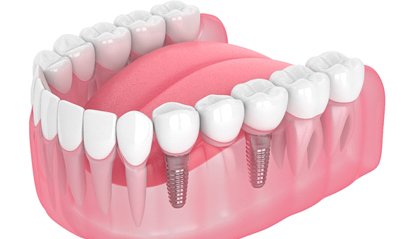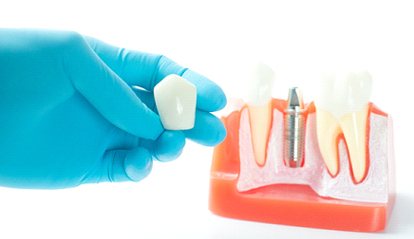
Cost of Dental Implants – St. Albans, VT
The Price of Replacing a Tooth
Chances are the final cost of your dental implants will be different than that of another patient; not only does the amount of teeth missing need to be taken into account, but the state of your oral health could affect the number of necessary steps in the process. When considering possible replacements for your missing teeth, your first step should be to call St. Albans Dental so that Dr. Aten, Dr. Davico, and Dr. Cone can help you figure out the factors that affect the cost of dental implants in St. Albans. <>
Why Choose St. Albans Dental for Dental Implants?
- Placement and Restoration Both Completed in One Location
- Strong, Stable, Natural-Looking Replacement Teeth
- In-House Savings Plan and Financing Available
Types of Dental Implants

How many implants do you need to get, and what sort of prosthetic teeth will they support? If you’ve only lost one tooth to decay or an accident, a single implant and a crown is all you’ll need. On the other hand, if a few teeth in a row are missing, you might have a couple of different options; two teeth can sometimes be replaced by two crowns that share a single implant, but you’ll need at least two implants and a dental bridge if you want to three or more teeth. And for patients with extensive tooth loss, at least four implant posts are needed to support a full set of dentures. All these restorations will come with a different cost.
What are the Stages of Dental Implant Treatment?

It takes several visits to receive a dental implant. After the consultation, the implants will be placed in your mouth via surgery. Once your mouth has healed, an abutment can be installed, and finally your prosthetic teeth will be designed and placed in your mouth. Every stage of the process comes with its own cost, and that’s not even accounting for bone grafts, periodontal therapy, and other treatments that may or may not be necessary before receiving implants. Dr. Aten, Dr. Davico, and Dr. Cone will create a timeline for you so that you can plan ahead for these treatments.
Are Dental Implants Worth the Investment?

It’s important to make sure that your dental implants are affordable, of course, but don’t forget why you’re having the procedure done in the first place. Implants provide a stronger, more stable base for your replacement teeth, giving them better chewing power and keeping them anchored in place. Also, since they last for decades (and possibly a lifetime, depending on the care they receive), they could ultimately end up costing less than traditional dentures or bridges that need to be replaced every 5 to 15 years or so.
Does My Dental Insurance Cover Dental Implants?
